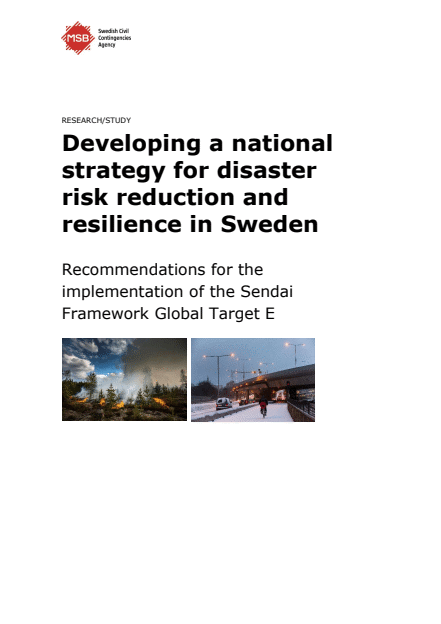Developing a national strategy for disaster risk reduction and resilience in Sweden : recommendations for the implementation of the Sendai Framework Global Target E
Detaljer

Senast granskad: 17 december 2019
MSB.se är huvudwebbplats för Myndigheten för samhällsskydd och beredskap.
Här finns information om MSB:s verksamhet och det stöd som myndigheten erbjuder i arbetet med vägledningar, publikationer och föreskrifter. Vi samarbetar och levererar även andra webbplatser.
CERT-SE är Sveriges nationella CSIRT (Computer Security Incident Response Team) med uppgift att stödja samhället i arbetet med att hantera och förebygga IT-incidenter.
På Informationssäkerhet.se erbjuds ett sammanhållet och praktiskt stöd för systematiskt informationssäkerhetsarbete från svenska myndigheter.
Krisinformation.se är en webbplats som förmedlar information från myndigheter och andra ansvariga till allmänheten före, under och efter en stor händelse eller kris.
Lilla Krisinfo riktar sig mot barn och unga. Vi förmedlar myndigheters och ansvariga aktörers information i samband med kriser och allvarliga händelser.
Tjugofyra7 bevakar utvecklingen inom Myndigheten för samhällsskydd och beredskaps ansvarsområden och ska stimulera till debatt i dessa frågor.

Senast granskad: 17 december 2019